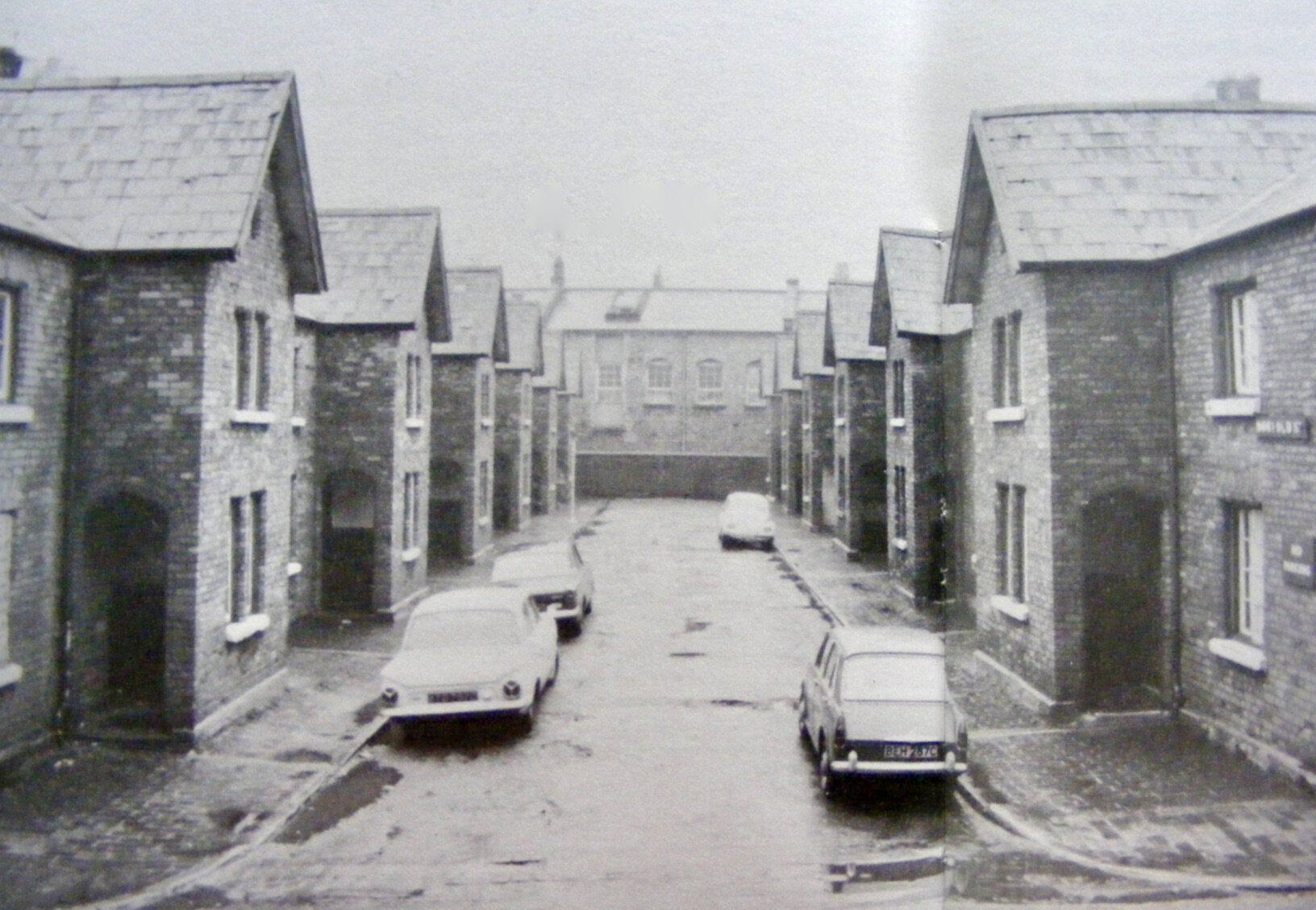
Virtual Museum
Railway Cottages
This page relates to the railway cottages constructed by the Grand Junction Railway Company on Tollit Street, Betley Street and Dorfold Street in Crewe, Cheshire.
The Grand Junction Railway needed to provide housing for its new workforce in 1842, and the first group to be built were in the Moss Square area, where Christ Church was eventually erected. They were designed by John Cunningham, a well-known Liverpool architect, who had designed Liverpool’s Lime Street Station in 1836.
As the Works grew so did the workforce who needed more houses so Betley, Tollitt and Dorfold Streets were built by a Birmingham company, Messrs G. Branson and E. Gwyther, to the same Cunningham designs. There are two house types, with Tollitt and Dorfold Streets having an extra gable on the frontage.
Dorfold Street in the 1970s
Tollitt Street in the 1970s
The contract gives detailed specifications, for example: “The floorboards which will be made of American Spruce will be one by nine inches (2.54 x 22.8cm) in section, the stairs of pitch pine and that all other wood will be American yellow pine.” In the corner of the living room there would be a cupboard with cross braced doors with proper hinges and fastened with hooks and eyes or buttons and brass spring catches. Two of the shelves were to have hook rails underneath them. In the kitchen there was to be a fireplace with ‘a strong iron centre bar’ and the area under the stairs would be enclosed with shelves.
The Grand Junction Company (by 1846 the London & North Western Railway Company) had its own gas works and the new cottages had a supply for lighting of the main room, a relatively rare feature at this time in working class houses. Some of the houses had some kind of water supply, with a local pump for those that did not. A reservoir on the stream near Mill Street was built in 1842, with the water pumped and filtered for the Railway Works and residents. The origins of the early residents included Bristol, Manchester, Liverpool, Staffordshire, Lancashire, Wales, Scotland and Ireland. The railway company board minutes stated that a strict watch was to be kept on ‘filthy and disreputable’ tenants and any company’s servant who was caught ‘bringing discredit on the establishment and endangering the health of the town’ was liable to dismissal.
Betley Street in 2021
Dorfold Street in 2021
A total of seventy houses were built in this group, but by 1876 some at the southern end were demolished to make room for the LNWR General Offices along the old Chester line. This line had been repositioned to the south in the 1860s to accommodate the growing Works area. The fifty-seven cottages were threatened with demolition in the early 1970s but a local campaign ensured they were conserved and renovated to modern standards, and they were awarded Listed Building status in 1976.
Our special thanks to Susan Chambers, Peter Robinson, and the Railway Cottages (Crewe) Residents Association for compiling this detailed history.




